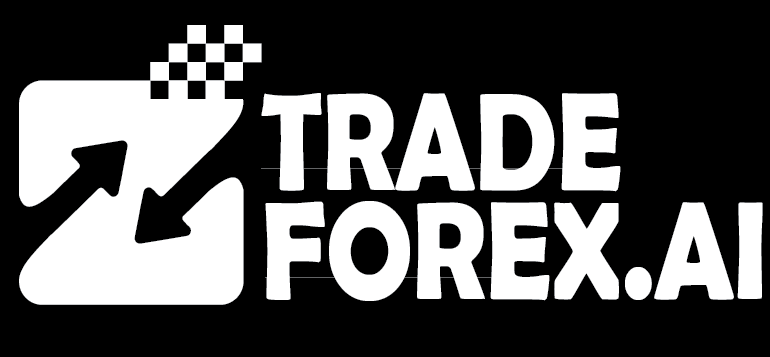Commodity trading has evolved from traditional floor exchanges into a sophisticated digital ecosystem shaping global finance in 2025. What was once dominated by large institutions is now open to individual investors, thanks to technology-driven platforms and real-time global access. Every major economic event—from oil supply disruptions to agricultural shortages—now ripples through commodity trading markets instantly, influencing prices and trader behavior worldwide.
Understanding the advantages and disadvantages of commodity trading has become essential for anyone seeking portfolio stability or diversification in today’s volatile economy. Commodities are not merely speculative assets; they form the foundation of industries and daily life. Gold preserves purchasing power during inflation, crude oil drives global energy systems, and agricultural goods sustain economic growth and consumer demand.
However, successful commodity trading requires far more than enthusiasm. Traders must interpret data, forecast macro trends, and manage volatility with discipline. Through commodity futures and options, investors gain leverage and flexibility, but without structured execution, these same tools can amplify losses.
In recent years, commodity market investment has gained greater prominence in diversified portfolios. Hedge funds manage billion-dollar commodity exposures, while individual traders use metals, energy, and agriculture to hedge against inflation. Yet, the risks in commodity trading—from leverage exposure to sudden geopolitical shocks—require informed, data-driven decision-making rather than emotional reactions.
As the global economy embraces digitisation and sustainability, commodity trading remains a bridge between financial opportunity and real-world value. This guide explores every major advantage and risk, helping you understand how commodities truly move modern markets—and how to navigate them intelligently in 2025.
How Commodity Trading Operates in the Global Financial System
Commodity trading functions through regulated exchanges that ensure standardised contracts, transparent pricing, and fair trade execution. Major global platforms like the Multi Commodity Exchange (MCX) in India, the Chicago Mercantile Exchange (CME) in the U.S., and the London Metal Exchange (LME) handle billions of dollars daily.
Each commodity—whether gold, oil, or wheat—has distinct supply-demand dynamics. Currency strength, energy policies, and climate patterns all influence prices. For example, an interest rate hike in the U.S. often strengthens the dollar and lowers gold prices, while geopolitical tensions in the Middle East can spike oil futures overnight.
Commodity market investment takes two main forms—spot trading and derivatives trading. Spot involves immediate exchange, while derivatives, primarily commodity futures and options, represent future agreements or rights to trade.
Futures bind both parties to transact on a fixed date and price, while options provide the flexibility to buy or sell later without obligation. These derivatives are essential in both speculation and hedging. A manufacturer may hedge copper futures to secure input costs, while a trader speculates on oil price movement for profit.
Modern commodity trading relies heavily on algorithmic trading and real-time analytics, helping participants track price movements across continents within seconds. This integration makes commodities a core part of global portfolio diversification.
Key Advantages of Commodity Trading
The advantages and disadvantages of commodity trading often determine whether an investor thrives or struggles. The benefits are particularly clear when inflation, currency volatility, or equity market declines dominate headlines.
1. Portfolio Diversification
Commodities behave differently from traditional assets. When stocks fall due to inflation fears, commodities like gold and crude oil usually rise, stabilizing portfolios.
2. Inflation Protection
During rising inflation, commodity prices often increase as raw materials become pricier. Gold and silver have historically acted as strong inflation hedges.
3. High Liquidity and Accessibility
Global trading platforms offer instant access to commodity contracts. An investor in India can trade U.S. oil or gold through regulated exchanges within seconds.
4. Leverage Benefits
Through commodity futures and options, investors control large positions using relatively smaller margins. For example, a 10% move in silver can yield amplified returns when traded with leverage.
5. Global Market Exposure
Commodity Market Investment connects traders directly to international supply and demand trends. Agricultural prices in South America or energy reports from OPEC directly affect profits.
These advantages explain why institutional investors allocate 10–15% of portfolios to commodities. They provide a hedge against inflation, geopolitical shocks, and monetary policy shifts—elements that define global markets today.
Disadvantages and Risks in Commodity Trading
Despite their benefits, commodity tradings carry notable downsides. The volatility that creates opportunity also magnifies loss. To succeed, traders must understand the risks in commodity trading clearly.
1. High Volatility
Commodity prices respond quickly to unexpected events—natural disasters, political decisions, or supply disruptions. For instance, oil prices jumped 20% in 2024 after production cuts by OPEC.
2. Leverage Exposure
While leverage multiplies gains, it also increases losses. Even a 2% adverse move can erase the entire trading capital if it is unmanaged.
3. Market Complexity
Commodities involve multiple global factors—currency rates, logistics, climate, and demand. Without research, predicting price trends becomes difficult.
4. Speculative Pressure
Many traders rely on rumors or sentiment rather than data, increasing overall market instability.
5. Margin Requirements
Commodity futures often require maintaining margins. When markets move against positions, margin calls can force liquidation at a loss.
Example: During Europe’s 2022 energy crisis, unhedged traders in natural gas futures faced historic losses as prices tripled within weeks. These cases underline that while commodities promise high potential, disciplined management is crucial for long-term success.
Understanding Commodity Futures and Options
Modern commodity tradings are built around derivative instruments that help investors manage price volatility and uncertainty. Among these, commodity futures and options are the most important tools for speculation, hedging, and risk control. They allow participants to trade based on expectations rather than physical ownership—making commodities accessible to both professionals and retail traders.
Commodity Futures: Structuring Prices for Tomorrow
A futures contract is a standardised agreement to buy or sell a commodity—like crude oil, natural gas, or wheat—at a specific price on a future date. These contracts are traded on regulated exchanges such as CME, MCX, and ICE, ensuring transparency and fair pricing.
In simple terms, futures let producers, consumers, and investors plan ahead. A farmer might sell corn futures months before harvest to guarantee a minimum selling price, while an airline might buy fuel futures to secure stable costs despite potential market spikes. Such planning strengthens commodity market investment by reducing exposure to unpredictable swings.
However, futures trading involves leverage—a double-edged sword that magnifies both gains and losses. Even a one-percent move against a large position can cause serious losses if risk isn’t managed carefully. For beginners, this is one of the biggest risks in commodity trading and highlights the need for stop-loss orders and proper margin allocation.
Commodity Options: The Power of Flexibility
Options contracts bring more adaptability. They give traders the right, but not the obligation, to buy (call option) or sell (put option) a commodity before a set date. This structure makes options ideal for controlling risk while still participating in market opportunities.
For example, imagine gold trading at $2,000 per ounce. A trader buying a call option with a strike price of $2,050 pays a small premium. If gold rises to $2,100, the trader profits; if it falls, the only loss is that premium. Options therefore provide a safety net—especially useful when market trends are uncertain or volatile.
In 2025, investors increasingly use commodity futures and options together to balance precision and flexibility. By combining both tools, traders can hedge long-term contracts, speculate on short-term momentum, and build portfolios resilient to sudden market shocks.
Why These Instruments Matter in 2025
The global trading environment in 2025 is faster, more digital, and more unpredictable than ever. Commodity tradings no longer depend solely on physical goods; they reflect real-time expectations driven by technology, data, and global news.
Futures and options help investors respond instantly to these changing dynamics. Corporations use them to stabilize operations. Fund managers rely on them to hedge inflation. Retail traders use them to diversify beyond stocks and currencies.
When used responsibly, these instruments turn volatility into strategic advantage. But when used without understanding, they expose traders to unnecessary risk. The most successful participants in commodity market investment are those who combine analysis, timing, and discipline—treating derivatives not as speculation, but as structured tools for sustainable decision-making.
Technology’s Role in Shaping Commodity Tradings
The 2025 commodity market looks vastly different from a decade ago. Technology has automated execution, analysis, and even prediction.
AI-powered systems now monitor global news, weather data, and production reports to identify trading signals in real time. Commodity market investment platforms integrate these insights into dashboards accessible to any retail trader.
Blockchain-based smart contracts are transforming settlement and recordkeeping. They ensure transparency in trade validation, reducing fraud. Machine learning algorithms detect market anomalies before major price shifts, allowing proactive action.
For example, predictive analytics in 2024 successfully anticipated soybean shortages in Asia due to drought patterns, helping traders enter long positions early.
While automation enhances accuracy, it also introduces new risks in commodity trading. Over-reliance on AI or automated bots can lead to misjudgments if data is incomplete. The most successful traders combine technology with human experience—using AI for analysis but relying on instinct for execution.
Technology has democratized commodity trading by lowering entry barriers. Yet, wisdom remains the most valuable tool in this high-speed environment.
The Impact of Geopolitics on Commodity Markets
Geopolitical forces shape commodity trading more profoundly than any technical pattern or chart signal. Political tensions, wars, sanctions, and global alliances directly influence commodity prices, trade routes, and investor sentiment. Every policy decision or international agreement can alter supply-demand dynamics overnight, making geopolitics one of the strongest driving forces behind price volatility.
In 2023 and 2024, several major geopolitical events reshaped global commodities. Rising tensions in the Middle East pushed crude oil beyond $100 per barrel, as traders priced in fears of supply disruptions. Sanctions on Russia redefined global energy routes, forcing European nations to diversify gas imports. Simultaneously, U.S.–China trade restrictions on rare earth and base metals led to a spike in aluminum and copper futures, creating ripple effects across manufacturing sectors.
Traders using commodity futures and options closely monitor these developments. A single OPEC production announcement or policy shift by a major exporter can move markets within seconds. That’s why geopolitical awareness forms an essential part of every commodity market investment strategy.
Smart investors hedge positions before critical global events—such as elections, trade summits, or central bank meetings—to shield capital from unexpected moves. Ignoring such factors often leads to sharp losses, proving one of the key risks in commodity trading.
Geopolitical changes also impact currency correlations. A weakening U.S. dollar, for instance, strengthens gold, silver, and agricultural commodities, while rising interest rates can pressure prices downward. Understanding these interconnections allows traders to anticipate shifts instead of reacting impulsively.
As the world transitions toward renewable energy and new trade alliances, geopolitical uncertainty continues to set the rhythm of global commodity trading in 2025—where every diplomatic move carries the potential to create or erase billions in market value.
Environmental and Climate Influences on Commodity Tradings
Climate change now affects commodity supply chains as directly as government policy. Droughts, floods, and hurricanes disrupt production and transportation, creating both risk and opportunity.
In 2024, heatwaves in India and China reduced agricultural yields, driving grain futures to record highs. Coffee prices surged as Brazilian rainfall patterns changed. Such examples highlight the importance of sustainability-driven commodity market investment.
Commodities like copper, lithium, and cobalt are also gaining attention due to their role in clean energy technologies. Traders increasingly see these as “green commodities” for the next decade.
Through commodity futures and options, producers and traders hedge weather risks effectively. Farmers insure harvests using put options, while corporations hedge raw material costs.
However, extreme weather volatility continues to increase risks in commodity trading. Long-term investors are now adopting ESG principles, favoring environmentally responsible assets to mitigate unpredictability.
By aligning profit with environmental awareness, modern commodity tradings combine economic goals with global responsibility.
Effective Risk Management in Commodity Trading
The most successful commodity tradings rely not on aggressive profit chasing but on precise control of losses. Managing risks in commodity trading demands structure, discipline, and emotional balance. Every experienced trader knows that protecting capital is the real foundation of long-term success.
Before entering any position, traders must evaluate both reward potential and risk exposure. The first step is defining stop-loss levels. A well-placed stop-loss ensures that losses remain limited when markets turn volatile. This simple rule, when followed strictly, can save an entire portfolio from collapse.
Practical strategies for risk control include:
- Set clear stop-loss levels: Exit automatically when prices move beyond your tolerance limit.
- Diversify exposure: Spread investments across metals, agriculture, and energy to balance sector-specific risk.
- Use position sizing: Risk only a small percentage—typically 1–3%—of total capital per trade.
- Avoid emotional trading: Stick to predefined entry and exit plans regardless of market noise.
- Track global indicators: Watch inflation trends, GDP releases, and interest rate decisions that influence prices daily.
For example, when crude oil volatility surged in 2024, traders with preset stop-loss levels and diversified positions preserved almost 90% of their trading capital, while unprepared participants suffered massive drawdowns.
Commodity futures and options allow flexible control through strategies like covered calls, hedging spreads, or protective puts. These reduce exposure during high volatility and maintain steady returns in unpredictable markets.
Ultimately, effective risk management transforms speculation into strategy. A structured framework shields traders from emotional panic during short-term losses and builds consistency. Commodity market investment rewards patience and planning far more than prediction—discipline remains the only true edge in volatile markets.
Starting Commodity Trading as a Beginner
Entering the world of commodity trading may seem overwhelming at first, but the process becomes clear with the right foundation. Beginners should view commodity market investment as a long-term learning journey rather than a shortcut to fast profits.
Every successful trader begins by understanding market mechanics. Start with studying how futures and options contracts function, how margin works, and how leverage amplifies both profit and loss. The goal is not to memorize terms but to master how each concept connects to real-world market movement.
Step-by-step path for beginners:
- Learn the Basics: Study contract types, trading hours, and margin requirements.
- Choose a Regulated Broker: Select platforms with transparent pricing and strong compliance.
- Start with Liquid Assets: Focus on gold, silver, or crude oil—commodities with high liquidity and global demand.
- Use Demo Accounts: Practice executing trades and applying strategies before risking real money.
- Follow Economic Data: Track inflation reports, weather forecasts, and central bank updates influencing commodity prices.
A beginner’s most valuable asset is emotional control. Many traders lose not because of strategy flaws but due to fear and impatience. Keeping trades small and manageable prevents overexposure. As experience grows, consistency replaces anxiety.
For instance, new traders who spent their first three months using demo accounts and studying macroeconomic data often perform better than those who jump straight into leveraged trading. This gradual approach sharpens analytical judgment and risk awareness.
In the long run, commodity futures and options serve as learning tools, not just instruments of profit. Over time, experience compounds like interest—each trade adds skill, confidence, and discipline. By treating commodity trading as an education in patience and precision, beginners transform into professionals who thrive in every market cycle.
Future Trends in Commodity Trading Beyond 2025
The next decade will redefine commodity trading. As global economies transition toward renewable energy and digital assets, new commodities are emerging—carbon credits, hydrogen, and battery metals.
Commodity market investment will become more technology-centric. Artificial intelligence will handle analysis, while humans focus on risk interpretation. Blockchain will automate settlement, and sustainability-linked assets will attract institutional flows.
Commodity futures and options will expand to include green contracts tied to environmental benchmarks. However, with innovation comes new risks in commodity trading—including cybersecurity, misinformation, and increased volatility.
Investors who adapt quickly will find immense opportunities. The key lies in continuous learning and flexibility. The line between traditional and digital commodities will blur, and success will favor those combining data literacy with macroeconomic insight.
In short, the future of commodity trading will be defined by knowledge, speed, and adaptability.
Conclusion: Smarter Trading, Sustainable Growth
Commodity tradings are no longer niche—they’re essential to modern financial strategy. Every trade reflects global forces such as inflation, politics, and technology. Those who understand these connections make sharper, more confident market decisions.
The advantages and disadvantages of commodity trading highlight an important truth: profit and risk are inseparable. Commodities can strengthen portfolios through diversification and real value, but success demands awareness and structure. Mastering Commodity Futures and Options transforms uncertainty into managed opportunity, not blind speculation.
In 2025, commodity market investment belongs to disciplined investors who combine data with patience. The risks in commodity trading remain real, but so does the potential for consistent, long-term growth when strategies are grounded in logic.
The most resilient traders of tomorrow will not just chase trends—they will understand them. They will read supply disruptions as signals, see inflation as an opportunity, and treat volatility as a teacher.
Commodity trading, when approached with discipline, knowledge, and adaptability, evolves from short-term bets into sustainable wealth-building systems. The future favors those who trade with insight, act with reason, and grow through every cycle of the ever-changing global market.
Read here to learn more about “How to Trade Commodities Effectively and Reduce Trading Risks”

I’m Chaitali Sethi — a seasoned financial writer and strategist specializing in Forex trading, market behavior, and trader psychology. With a deep understanding of global markets and economic trends, I simplify complex financial concepts into clear, actionable insights that empower traders at every level. Whether it’s dissecting winning strategies, breaking down market sentiment, or helping traders build the right mindset, my content bridges the gap between information and implementation.




